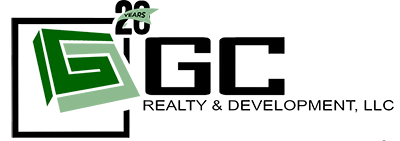
Author: Mark Ainely | Partner GC Realty & Development & Co-Host Straight Up Chicago Investor Podcast
There’s a lot of talk out there about zoning in Chicago, but not many investors truly understand how those letters, R2, R3, R4, and R5, can change the outcome of a deal. In this Straight-Up Tuesday Tip, Tom Shallcross and Mark Ainley break down how residential zoning actually works on a standard 25’×125’ Chicago lot, what FAR (floor area ratio) means for what you can build, and how setbacks and unit allowances determine whether your property’s potential is limited or unlocked.
In this episode of the Straight Up Chicago Investor Podcast, we focus on residential zoning classifications and their direct impact on what can be built, legalized, or added “by right.” Mark and Tom discuss how FAR limits square footage, how basements and enclosed spaces can count against those limits, and why R4 is the pivotal point for most house hackers and small multifamily investors in Chicago.
They also dive into setbacks, height restrictions, and aldermanic approvals, clarifying what’s possible without extra red tape. Whether you’re evaluating a teardown, planning a basement legalization, or looking for ways to add value, this episode breaks down how understanding your zoning can make or break your next project.
Questions We Answer in This Episode
Q: Why should Chicago investors care about zoning if they’re not building new?
A: Because zoning dictates what’s possible. Even small projects, like adding a dormer or finishing a basement, can hit compliance walls if setbacks or FAR limits aren’t met.
Q: What is FAR and why does it matter?
A: FAR, or Floor Area Ratio, is the total above-grade square footage you can build relative to your lot size. On a standard 25x125 lot (3,125 sq ft):
R2 allows 65% (2,000 sq ft)
R3 allows 0.9
R4 allows 1.2
R5 allows 2.0
Basements that are at least 50% below grade don’t count toward FAR, but enclosed spaces like porches might.
Q: How many units can I have by right on a standard Chicago lot?
A:
R2: 1 unit per 5,000 sq ft → single-family only
R3: 1 unit per 2,500 sq ft → still single-family on most standard lots
R4: 1 unit per 1,000 sq ft → three units by right
R5: 1 unit per 400 sq ft (in theory)
Q: Why is R4 such an opportunity for house hackers and small landlords?
A: Because three units by right means you can often legalize an existing basement or duplex configuration without needing aldermanic approval.
Q: What are the risks of non-conforming buildings?
A: Many existing two- and three-flats on R2/R3 zoning are grandfathered in. If destroyed, they couldn’t legally be rebuilt as multifamily without an upzone.
Q: Do garages count against FAR?
A: Detached garages don’t count against FAR, but enclosed additions often do.
Q: How do ADUs interact with zoning?
A: The new ADU ordinance layers onto existing zoning, especially R4 and R5. Combined, these can allow for coach houses, basement apartments, and new accessory units, often without requiring off-street parking.
Q: Where can I verify zoning information before buying?
A: Start with the Cook County Assessor for lot size and the Chicago Zoning Map for your zoning label. Always verify with a current survey before making offers.
Q: What’s the underrated play right now?
A: R4 properties, or R3.5 lots that can be upzoned to R4. Many sellers compare themselves to R2/R3 comps, so there’s hidden upside for buyers who understand the difference.
Show Notes
00:00 Why zoning literacy matters for all Chicago investors
00:37 Focusing on R2–R5 residential zoning
02:01 What FAR means and how it’s calculated
03:07 How basements and enclosed porches affect FAR
04:39 Unit counts per zoning classification
06:48 R4 as a game-changer for three units by right
08:04 R5 and what’s realistically possible with setbacks
09:11 Legalizing a basement and building a coach house example
10:36 How aldermanic approvals and upzoning requests work
12:24 Why dormers often “step in” from existing walls
14:11 How zoning changes affect property valuation
15:26 Where to verify zoning and find nearby upzones
16:25 How R4 + ADU creates compounding value
16:47 Why R5 should always trigger deeper analysis
Takeaways for Chicago Property Managers and Landlords
R4 zoning is the pivot: three units by right can transform your investment strategy.
FAR, setbacks, and height limits all work together to shape what’s feasible.
Grandfathered footprints can’t be expanded without adjustments, plan accordingly.
ADUs and R4/R5 zoning combined can unlock additional revenue without aldermanic hurdles.
Always verify zoning, lot dimensions, and survey data before you build or buy.
Prospecting for R4 or R3.5 lots that can be upzoned is one of the best value plays in today’s market.
Guest Information
Guest Name: Tom Shallcross & Mark Ainley
Guest Company: Straight Up Chicago Investor Podcast
Guest Link: https://straightupchicagoinvestor.com
Because finding good tenants and property management shouldn’t feel like online dating.
Dear Investor,
If you are an investor in either the city or suburbs of Chicago, I would love to speak with you about how we can help you on your real estate journey. At GC Realty & Development LLC, we help hundreds of Chicagoland real estate owners and brokers each year manage their assets with both full service property management and tenant placement services.
We understand that every investor’s goals are unique, and we love learning about each client’s individual needs. If there is an opportunity to help you buy back your time by managing your rental property or finding quality tenants, please check us out.
Best Investing,

Founder, Partner, Podcast Co-Host, and Investor

 Vendor Portal
Vendor Portal


